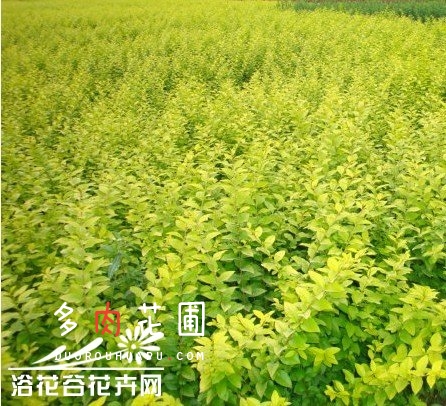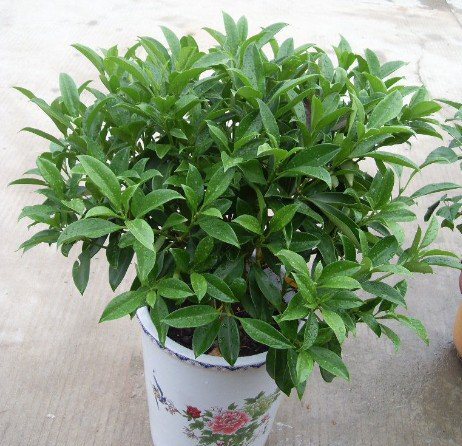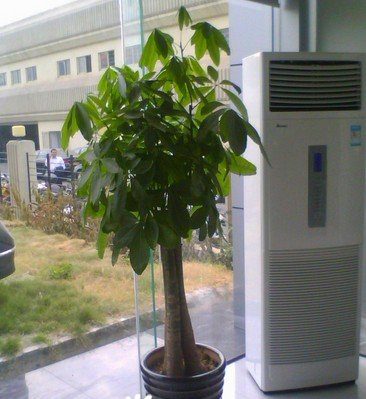Causes and control measures of falling leaves in the growing period of Ligustrum lucidum
Causes and control measures of falling leaves in the growing period of Ligustrum lucidum
According to the study of experts, the spot disease is caused by the pathogenic fungus of the genus afternaria. In the early stage, the leaves appeared brown spots, surrounded by purplish red halos, and black mildew could be seen on the spots, that is, conidiophores and conidia of the pathogen. As the temperature rises, sometimes several disease spots are connected, and finally the leaves scorch and fall off. Alternaria mainly overwintered as mycelium on the remnant of soil surface disease, and the conidia were transmitted through air flow or branch-leaf contact, and invaded the host directly from wounds, stomata or directly. The incubation period was 10 to 20 days, the optimum temperature for growth was 26 ℃, and the optimum temperature for spore germination was 18 ℃ to 27 ℃. Under the condition of suitable temperature and high humidity, the spores can germinate in a few hours. Last year, Hengshui area entered the rainy season ahead of schedule in June and lasted until September. Due to the dense planting, poor ventilation and light transmission, a relatively stable environment with high humidity and suitable temperature was formed among the plants, which was very beneficial to the germination and invasion of spores and led to the occurrence of diseases.

The scale insect is small, about 2 mm, and crawls faster on the branches before it is fixed. Where the branches and leaves are too dense and the ventilation and light transmission conditions are poor, the harm of diseases and insect pests is serious. Often cause defoliation, serious will also make the plant wither and die. In order to prevent the defoliation of Ligustrum lucidum during the growing period, the following control measures can be taken, and the effect is good. 1. Choose the topography and grasp the planting pass. The planting land should be kept at a high level, and water must not be accumulated. Planting should be reasonable and close planting, and with the growth of the plant to reasonably thinning branches, enhance the plant internal ventilation, light transmission, reduce humidity. two。 Strengthen cultivation management and increase the application of organic fertilizer. The combined use of nitrogen and phosphate fertilizer can make the seedlings grow vigorously and enhance their stress resistance. Avoid partial application of available nitrogen, causing seedlings to grow excessively. 3. Clean up the planting land and block the source of germs. After each pruning, the cut leaves and branches should be cleared out of the planting site in time, remove weeds at any time, and always keep the planting ground clean and free of debris. Reduce the overwintering mycelium and block the source of bacteria. 4. Trim the wound in time and treat the wound in time. Little or no pruning should be done in the rainy season to reduce the wound and reduce the possibility of germ invasion. No matter when it is trimmed, it should be protected by spraying fungicide immediately after cutting. 5. Regular spray prevention and treatment. Disease prevention and control must give priority to prevention and combine prevention and control. From late June, fungicides are sprayed every 7 to 10 days, and after each rain, fungicides are sprayed again until the end of the rainy season in September. In the early stage of the disease, internal inhalation fungicides can be used, such as carbendazim, thiophanate, liquids and so on. In order to control shell insects, imidacloprid can be used together with fungicides before the worm is fixed. Protective fungicides such as Bordeaux solution and mancozeb can be used in the later stage. In order to prevent the bacteria from producing drug resistance, internal inhalation fungicides and protective fungicides can be used alternately. Causes and control measures of leaf defoliation in the growing period of Ligustrum lucidum in order to prevent and control the defoliation of Ligustrum lucidum during its growth period, the following control measures have been taken with good results. 1. Choose the topography and grasp the planting pass. The planting land should be kept at a high level, and water must not be accumulated. Planting should be reasonable and close planting, and with the growth of the plant to reasonably thinning branches, enhance the plant internal ventilation, light transmission, reduce humidity. 2. Strengthen the cultivation management and increase the application of organic fertilizer. The combined use of nitrogen and phosphate fertilizer can make the seedlings grow vigorously and enhance their stress resistance. Avoid partial application of available nitrogen, causing seedlings to grow excessively. 3. Clean up the planting land and block the source of germs. After each pruning, the cut leaves and branches should be cleared out of the planting site in time, remove weeds at any time, and always keep the planting ground clean and free of debris. Reduce the overwintering mycelium and block the source of bacteria. 4. Prune and treat the wound in time. Little or no pruning should be done in the rainy season to reduce the wound and reduce the possibility of germ invasion. No matter when it is trimmed, it should be protected by spraying fungicide immediately after cutting. 5. Regular spray prevention and treatment. Disease prevention and control must give priority to prevention and combine prevention and control. From late June, fungicides are sprayed every 7 to 10 days, and after each rain, fungicides are sprayed again until the end of the rainy season in September. In the early stage of the disease, internal inhalation fungicides can be used, such as carbendazim, thiophanate, liquids and so on. In order to control shell insects, imidacloprid can be used together with fungicides before the worm is fixed. Protective fungicides such as Bordeaux solution and mancozeb can be used in the later stage. In order to prevent the bacteria from producing drug resistance, internal inhalation fungicides and protective fungicides can be used alternately.
- Prev

The reason for the yellowing of African jasmine leaves
African jasmine is easy to adapt to unfamiliar environment and can be planted in courtyards and balconies. African jasmine branches as emerald, leaves shiny, flowers slightly fragrant, elegant flowers, each five-petal, umbrella-shaped, clustered at the top of the flower branch. The flowering period is very long, blooming in winter and summer, and blooming most brightly in spring and summer.
- Next

13 main reasons for falling leaves of farmed rich trees
Malaba chestnut, also known as melon chestnut, is a rich tree. It is a small evergreen tree of the kapok family. Costa Rica, originally from Mexico. Palmate leaves, 7-11 leaflets, indoor rich tree long round to Obovate. There are horticultural varieties, flowers and leaves, rich trees. Because the name of the fortune tree is very popular with businessmen and the general public.
Related
- Fuxing push coffee new agricultural production and marketing class: lack of small-scale processing plants
- Jujube rice field leisure farm deep ploughing Yilan for five years to create a space for organic food and play
- Nongyu Farm-A trial of organic papaya for brave women with advanced technology
- Four points for attention in the prevention and control of diseases and insect pests of edible fungi
- How to add nutrient solution to Edible Fungi
- Is there any good way to control edible fungus mites?
- Open Inoculation Technology of Edible Fungi
- Is there any clever way to use fertilizer for edible fungus in winter?
- What agents are used to kill the pathogens of edible fungi in the mushroom shed?
- Rapid drying of Edible Fungi

